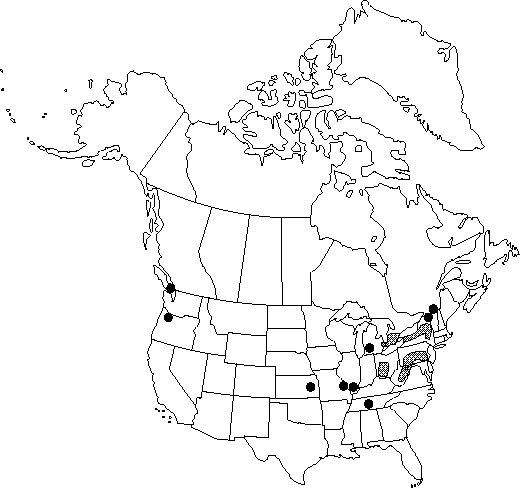Stems erect, slender, 10-75 cm, glabrous. Leaves 2-16 cm; basal leaves petiolate, segments wider than ±sessile cauline leaves. Inflorescences: involucral-bracts whorled, similar to cauline leaves, curving up to surround flower. Flowers 10-50 (-60) mm diam.; sepals blue, sometimes pink or white, short-clawed, 8-25 × 3-15 mm, apex entire to irregularly incised or lobed, occasionally lacerate; petals clawed, abaxial lip distally 2-lobed, bearing 2-3 nectar glands or apex expanded, adaxial lip scalelike. Capsules smooth, 8-35 mm; locules 5-10; beak persistent, slender.
Phenology: Flowering late spring–early fall.
Habitat: Dump sites and waste places
Elevation: 0-400 m
Distribution

Introduced; B.C., Ont., Que., Ill., Kans., Md., Mich., Mo., N.Y., Ohio, Oreg., Pa., Tenn., W.Va., native to Eurasia
Discussion
Nigella damascena is frequently cultivated as an ornamental and for dried-flower arrangements. It occasionally escapes cultivation and may become established. Populations in Ontario and Quebec, and probably elsewhere, are short-lived.
Most North American populations of Nigella damascena are represented by a mixture of single- and double-flowered (having supernumerary flower parts) individuals. Sepals tend to be larger and more variable in color than in Eurasian plants. Single-flowered plants usually have petals; petals appear to be absent in double-flowered individuals.
Selected References
None.
Lower Taxa
"wider" is not a number.
